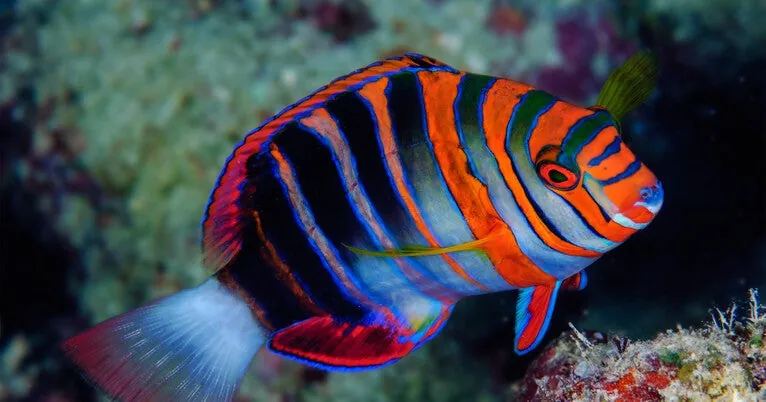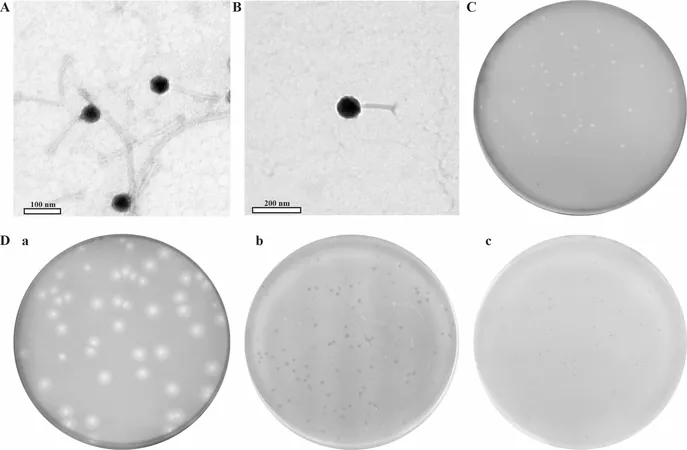
Revolutionizing Ocean Life: How Coral-Reef Fishes Exploded in Diversity
2025-05-07
Author: Wei
The Hidden Treasures of Coral Reefs
Beneath the waves lies a treasure trove of biodiversity, with coral reefs serving as the vibrant hotspots for marine life. A recent groundbreaking study, led by Yale researchers, uncovers the mysteries behind the stunning variety of species that make these underwater ecosystems their home.
The Spectacular Evolution of Wrasses and Parrotfishes
Focusing on wrasses and parrotfishes, among the most ecologically diverse lineages of reef fishes, the study reveals that these families—together home to over 650 species—experienced an unprecedented burst of evolutionary innovation around 20 million years ago during the early Miocene.
"Multiple lineages of wrasses and parrotfishes diversified rapidly and independently during this time," explains Chase D. Brownstein, the study's lead author. "These diversification events correlate with significant changes in the coral reef ecosystems they inhabited, reshaping their evolutionary paths."
Unlocking Evolution with Genomic Data
Published in Science Advances, the researchers utilized genomic data from nearly 400 species, constructing a time-calibrated evolutionary tree to reveal the timelines of these rapid diversifications. Their findings highlight the critical role of collaboration across natural history museums, pooling resources to unveil the evolutionary relationships among these fish.
Stability Sparks Diversity
Interestingly, this evolutionary explosion occurred during a period of global climate stability, prompting researchers to dig deeper for explanations. Though commonly considered evolution catalysts, climate fluctuations were not the driving force behind this diversification.
The ancestral lineage of these fishes was equipped with pharyngeal jaws—a unique adaptation that facilitated their ecological success. However, the research revealed that the rapid diversification cannot solely be attributed to specific trait evolution or novel jaw structures. Instead, it was the dynamic conditions within coral reefs that served as the real catalyst.
Coral Reefs: The Evolutionary Engine
Brownstein notes, "The key finding is that lineages associated with coral reefs saw immense diversification while those outside did not. The reef environment, including coral extinction and its structural changes, sparked an explosion of new innovations and dietary habits among reef fishes."
A Melting Pot of Biodiversity
This research aligns with other evidence pointing to dramatic shifts starting around 20 million years ago, coinciding with the formation of the renowned Indo-Pacific Coral Triangle, home to the highest marine biodiversity on Earth.
Significance for Future Conservation Efforts
The implications of this study extend far beyond evolutionary insights. Thomas Near, a Yale professor involved in the research, emphasizes, "Understanding how Earth's biodiversity has developed equips us to better protect these ecosystems. The intricate legacies of changes play a pivotal role in predicting the impacts of climate change and human activity on these hotspots of life."
This essential research, supported by various academic and funding institutions, shines a light on the delicate balance of our oceans and the urgent need to preserve them for generations to come.


 Brasil (PT)
Brasil (PT)
 Canada (EN)
Canada (EN)
 Chile (ES)
Chile (ES)
 Česko (CS)
Česko (CS)
 대한민국 (KO)
대한민국 (KO)
 España (ES)
España (ES)
 France (FR)
France (FR)
 Hong Kong (EN)
Hong Kong (EN)
 Italia (IT)
Italia (IT)
 日本 (JA)
日本 (JA)
 Magyarország (HU)
Magyarország (HU)
 Norge (NO)
Norge (NO)
 Polska (PL)
Polska (PL)
 Schweiz (DE)
Schweiz (DE)
 Singapore (EN)
Singapore (EN)
 Sverige (SV)
Sverige (SV)
 Suomi (FI)
Suomi (FI)
 Türkiye (TR)
Türkiye (TR)
 الإمارات العربية المتحدة (AR)
الإمارات العربية المتحدة (AR)